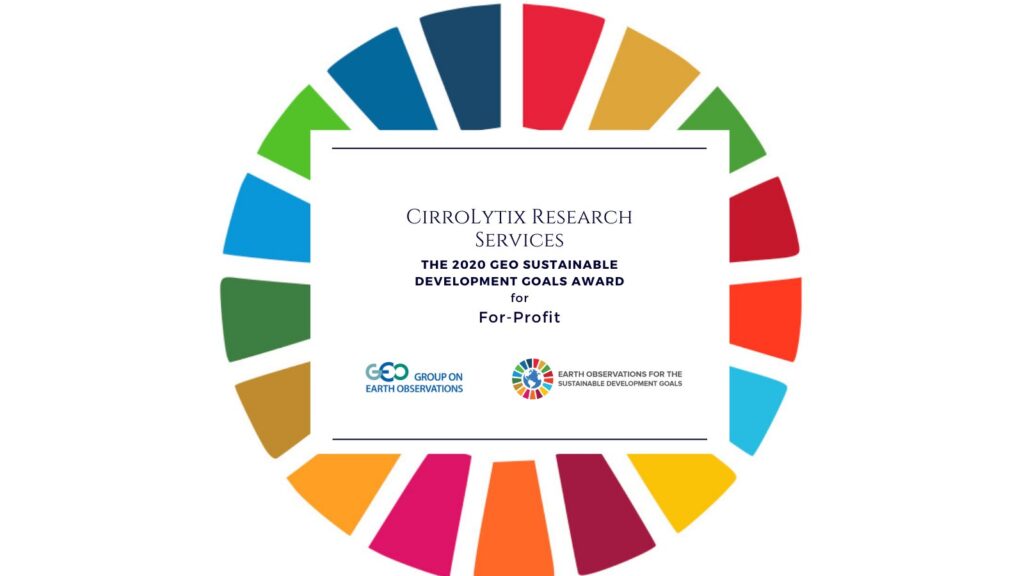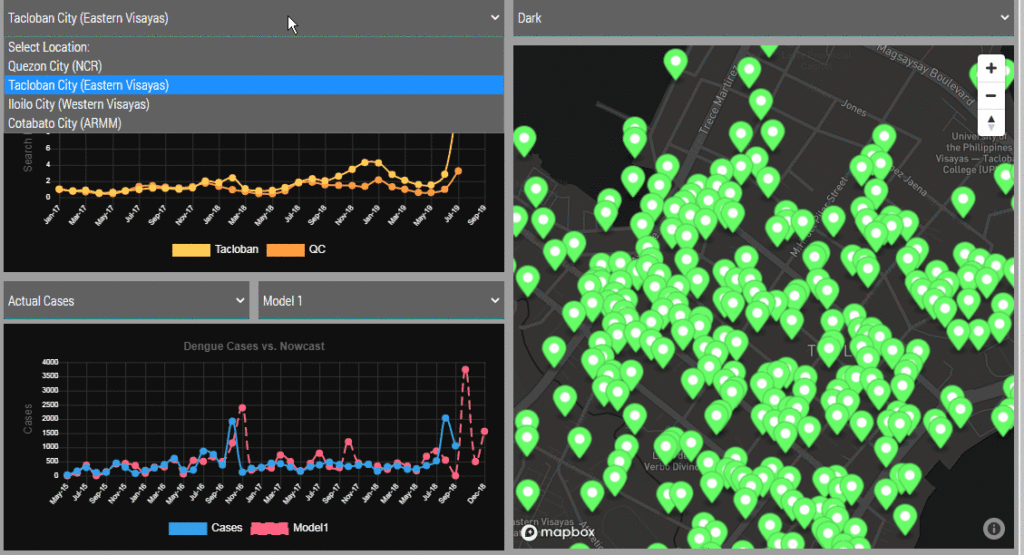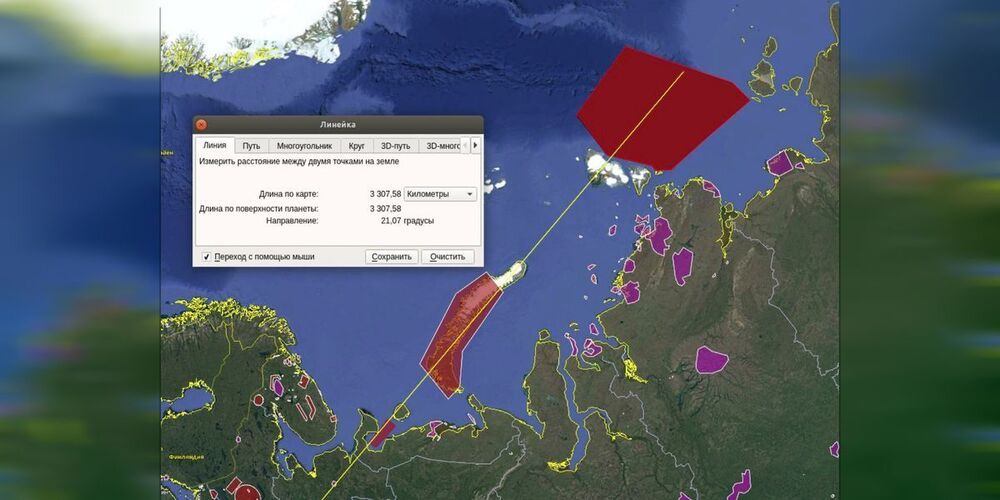Dec 20, 2020
Early humans may have survived the harsh winters
Posted by Raphael Ramos in category: futurism
Seasonal damage in bone fossils in Spain suggests Neanderthals and their predecessors followed the same strategy as cave bears.
Seasonal damage in bone fossils in Spain suggests Neanderthals and their predecessors followed the same strategy as cave bears.

MANILA, Philippines — A Filipino startup is recognized globally in developing a dengue hotspot prediction system using satellite and climate data in the 2020 Group on Earth Observations Sustainable Development Goals (GEO SDG) Awards for the Sectoral category, For-Profit. The GEO SDG Awards recognize the productivity, ingenuity, proficiency, novelty, and exemplary communications of results and experiences in the use of Earth observations to support sustainable development.
CirroLytix Research Services was formed to create social impact through big data. Through the application of machine learning, data engineering, remote sensing, and social listening, the Philippines-based data analytics firm hopes to help governments, researchers, non-government organizations (NGO), and social enterprises achieve positive change. The Advanced Early Dengue Prediction and Exploration Service (Project AEDES) is one of the CirroLytix’s flagship projects developed during the 2019 National Aeronautics and Space Administration’s (NASA) International Space Apps Challenge. It combines digital, climate, and remote sensing to nowcast dengue trends and detect mosquito habitats to help pre-empt cases of dengue. Project AEDES process leverages normalized difference vegetation index (NDVI), Fraction of absorbed photosynthetically active radiation (FAPAR), and normalized difference water index (NDWI) readings from Landsat and Sentinel-2 to estimate still water areas on the ground, which is correlated with dengue case counts from national health centers.

Dominic Vincent “Doc” Ligot, co-founder and chief technology officer of CirroLytix, describes Project AEDES as an “early detection of panics from online searches, anticipating case counts from environment readings, but most importantly pinpointing hotspots from mosquito habitat detection.”
The Pinoy-made dengue mapper tool won the annual international hackathon of NASA globally in the best use of data, the solution that best makes space data accessible, or leverages it to a unique application. Aside from winning last year, CirroLytix also developed an integrated public policy information portal measuring the impact of the coronavirus pandemic using Earth observation, in-country economic and human mobility data, and global infection case counts, thus winning again in the Space Apps COVID-19 Challenge for the same category in the best use of data. Named G.I.D.E.O.N. (Global Impact Detection from Emitted Light, Onset of COVID-19, and Nitrogen Dioxide), this dashboard for policy makers and economic planners shows the impact of COVID-19 on various countries and effects on the economy and environment.
Continue reading “Filipino startup recognized in addressing SDG's using space tech” »
Astronomers behind the most extensive search yet for alien life are investigating an intriguing radio wave emission that appears to have come from the direction of Proxima Centauri, the nearest star to the sun.
The narrow beam of radio waves was picked up during 30 hours of observations by the Parkes telescope in Australia in April and May last year, the Guardian understands. Analysis of the beam has been under way for some time and scientists have yet to identify a terrestrial culprit such as ground-based equipment or a passing satellite.

This missile system is designed to reach up and smash enemy satellites in orbit.
Russia has carried out another test of its new PL19 Nudol anti-satellite weapon system, a ground-launched missile designed to destroy satellites stationed in low-Earth orbit in order to deny their use by Russia’s enemies.
Continue reading “It Sure Looks Like Russia Just Tested a Space Weapon” »
India just laid the foundations for what officials are claiming will be the world’s largest renewable energy park. The gigantic project, in the Kutch region of western Gujarat, will cover an area of 180, 000 acres — an area roughly the size of Singapore, as Agence France-Presse reports.
Once finished, the park will produce 30 gigawatts of electricity from both wind turbines and solar arrays, thereby cutting carbon dioxide emissions by up to 50 million tons per year. For perspective, the protagonists in the 1985 film “Back to the Future” needed to generate a staggering 1.21 gigawatts of power to activate their time machine — and this new facility will produce more than 24 times that figure.
“The hybrid renewable energy park will be largest in the world and generate 30, 000 megawatts of power,” prime minister Narendra Modi said during the park’s official inauguration, according to AFP.

The octopus essentially has many brains and can edit its own dna this is probably the closest invebrate as close to an alien species that we have on earth because their biology is so exotic.
One step closer to a light into matter molecular synthesizer: 3.
Molecular machine-track conjugate 1 (Figure 1) was designed to use iterative Wittig reactions to form carbon-carbon double bonds between a macrocycle and building blocks abstracted one at a time and in sequence from a track. The Wittig reaction 24, 25, 26 was chosen as it is robust and structurally tolerant, lending itself to exploitation in a range of contexts, including dynamic DNA-template synthesis.9 Our machine is based on a rotaxane architecture, in which the macrocycle has a reactive aldehyde attachment and the axle has the building-block sequence encoded as phosphonium salts during its synthesis. The 2, 2-diphenylpropane phosphonium units act both to restrict the position of the ring on the track and, upon deprotonation, as reactive ylide functionalities. Each ylide is large enough to block the passage of the macrocycle, trapping the ring within a compartment defined by the bulky stopper at the terminus of original threading and the next ylide along the track. Once a reactive building block can be reached by the macrocycle-appended aldehyde, it can be removed from the track through a Wittig reaction that adds it to the terminus of the growing chain. Each barrier also contains an aldehyde unit, so that once the building block is added to the end of the chain, it is able to react with the next barrier on the track that the macrocycle can access, enabling the alkene-connected oligomer to grow through successive Wittig reactions.
The specific size and constitution of the 2, 2-diphenylpropane motif of the building blocks proved important for successful machine operation. Early track designs in which the ylide and aldehyde were attached to the same aromatic ring or extended conjugated system proved insufficiently reactive (see Section S7 for a brief discussion of initial designs). Embedding the phosphorus atoms within the vector of the track allowed synthetically accessible triaryl phosphines to be the basis of the track design, expediting the synthesis (see Sections S2 and S3). The phenyl substituent at each phosphorus center (e.g., 4a–4D) also proved important: when a tolyl (4-methylphenyl) linking group was investigated, it proved difficult to develop macrocycles that could both thread during the rotaxane-forming reaction and, subsequently, pass over the phosphine oxide in the track formed from the Wittig reaction.

😃
Approach could speed up search and rescue missions and forest surveys.
Continue reading “Watch a swarm of drones fly through heavy forest—while staying in formation” »
O,.o.
Google will use large batteries to replace the diesel generators at one of its data centers in Belgium, describing the project as a first step towards using cleaner technologies to provide backup power for its millions of servers around the world.
“Our project in Belgium is a first step that we hope will lay the groundwork for a big vision: a world in which backup systems at data centers go from climate change problems to critical components in carbon-free energy systems,” said Joe Kava, Vice President for Data Centers at Google. “We’re aiming to demonstrate that a better, cleaner solution has advanced far enough to keep the internet up and running.”
Continue reading “Google Looks to Batteries as Replacement for Diesel Generators” »
